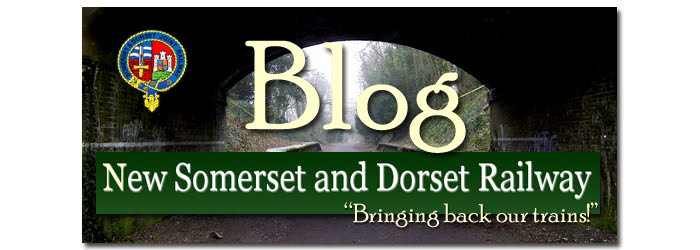
We've always taken our responsibilities towards the environment seriously at the S&D. From protection of the animals and plants that share our site through to caring for the woodland alongside the station in cooperation with Wildspace, and trying to recycle and use kinder methods of controlling weeds and pests. Soon we'll be growing some of our own catering coach food in the greenhouse (organically of course!) and we've always used free range eggs in the food we sell.
Ten years ago few of course took much of this into account, but the environment - particularly climate change and peak oil - are rapidly taking over as our principle causes for concern over and above the old issues such as unemployment, education and defence. As we run out of oil and the world continues to heat up will the big guns of big brother turn towards the wider railway heritage movement? As we turn from oil to coal for our fossil fuels will heritage railways even be allowed to buy coal? How will we run our diesels and steam engines?
Diesel has no future, very soon the costs of fuelling a diesel loco will make them uneconomic on all lines. Steam will struggle on but soon everyone will be after coal and the price will skyrocket. There is an option of course, and I've touched on it before. Steam engines being simple and sturdy constructions can run on anything that will burn, and the obvious solution is to burn wood. It's renewable (if not over-exploited), can be grown on our doorstep and if planned well costs very little. Growing new trees to replace those burned for fuel keeps the carbon-cycle pretty much neutral.
But another aspect is that we need our passengers to come to us - today many use cars but few if any will have this option in the medium-term. Only lines with a connection to a much expanded rail network will be able to survive and flourish. But they will also need to serve a real transport need - and this should be part of any line's strategy. Most of today's heritage lines would serve a real transport need, whether for freight, passengers or both. Whether a real 'heritage' aspect will survive in this new world remains to be seen, but then today's heritage lines are very different from the enthusiast-targeted 'preserved' lines of the 1950s and 60s. We shouldn't be frightened of change, in fact we should embrace it. Careful planning is the secret, and we engage in plenty of that at the S&D!
